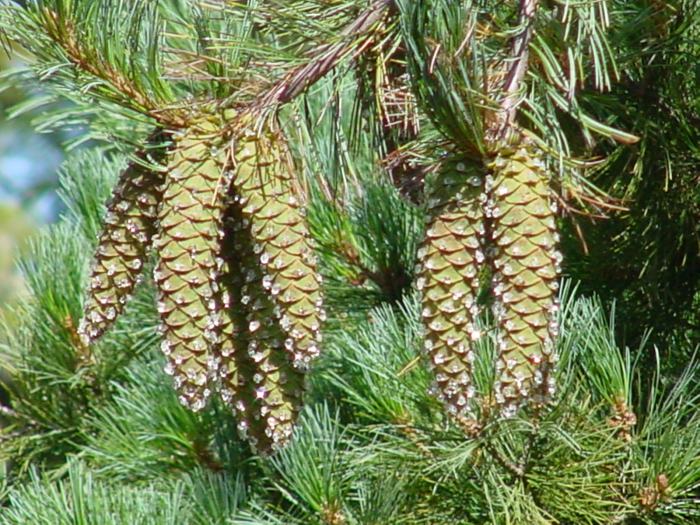- Western White Pine
Taxobox
name = Western White Pine
status = LR/lc | status_system = IUCN2.3

image_width = 240px
image_caption = Cones and foliage of Western White Pine
regnum =Plant ae
divisio =Pinophyta
classis = Pinopsida
ordo =Pinales
familia =Pinaceae
genus = "Pinus"
subgenus = "Strobus"
species = "P. monticola"
binomial = "Pinus monticola"
binomial_authority = Douglas exD. Don Western White Pine ("Pinus monticola"; family
Pinaceae ) is a species ofpine that occurs in the mountains of the westernUnited States andCanada , specifically the Sierra Nevada, theCascade Range , theCoast Range , and the northernRocky Mountains . The tree extends down to sea level in many areas, particularly in Oregon and Washington. It is thestate tree ofIdaho .Western White Pine is a large
tree , regularly growing to 30-50 m and exceptionally up to 70 m tall. It is a member of the white pine group, "Pinus " subgenus "Strobus ", and like all members of that group, the leaves ('needles') are in fascicles (bundles) of five, with a deciduous sheath. The needles are finely serrated, and 5-13 cm long. The cones are long and slender, 12-32 cm long and 3-4 cm broad (closed), opening to 5-8 cm broad; the scales are thin and flexible. The seeds are small, 4-7 mm long, and have a long slender wing 15-22 mm long.It is related to
Eastern White Pine ("Pinus strobus"), differing from it in having larger cones, slightly longer-lasting leaves (2-3 years, rather than 1.5-2 years) with more prominentstoma tal bands, and a somewhat denser and narrower habit. The branches are borne in regular whorls, produced at the rate of one a year; this is pronounced in narrow, stand-grown trees, while open specimens may have a more rounded form with wide-reaching limbs. It is widely grown as anornamental tree , but has been heavily logged throughout much of its range in the past.It has been seriously affected by the White Pine Blister Rust ("Cronartium ribicola"), a fungus that was accidentally introduced from
Europe in 1909. TheUnited States Forest Service estimates that 90% of the Western White Pines have been killed by the blister rust west of the Cascades. Large stands have been succeeded by other pines or non-pine species. The rust has also killed much of theWhitebark Pine outside ofCalifornia .Resistance to the blister rust is genetic, and due to Western White Pine's genetic variability some individuals are relatively unaffected by the rust. The US Forest Service has a program for locating and breeding rust-resistant Western White Pine and
Sugar Pine (see external link below). Seedlings of these trees have been introduced into the wild.References
*
* [http://www.fs.fed.us/r6/dorena/ US Forest Service Dorena Tree Improvement Center]
Wikimedia Foundation. 2010.
